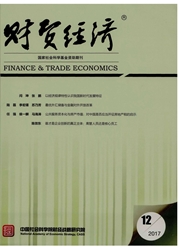

 中文摘要:
中文摘要:
随着近年来金融市场化路径逐渐清晰,金融改革如何影响地区发展不平衡成为需要重点关注的问题。本文将金融市场化改革对地区发展不平衡的影响分解为“规模”效应和“效率”效应之后,发现“规模”效应主导还是“效率”效应主导是决定金融市场化与地区发展不平衡之间关系的关键。借鉴中心-外围模型思想,本文从金融市场化角度对Kuznets曲线假说进行重新解释,提出了理论假设,最后基于新的地区发展不平衡测算及空间分解方法,使用1997—2009年省级数据对理论假设进行实证检验。实证结果显示,因为地区发展不平衡程度取决于外围地区内部的发展不平衡,而“规模”效应在其中发挥了主导作用,所以金融市场化加剧了总的地区发展不平衡;虽然金融市场化对东部地区发展不平衡的影响并不明显,但加剧了中西部地区的发展不平衡。
 英文摘要:
英文摘要:
As financial market reform path gradually get clear recently, how the financial market reform affects regional inequalities is becoming a major concern. In this paper, we decompose the effect of financial market reform on regional inequalities into "scale" effect and "efficiency" effect, and find that the key to the effect of financial market reform on regional inequalities is whether it is dominated by "scale" effect or "efficiency" effect. Based on the center-periphery model, we re-explain Kuznets curve hypothesis and propose theoretical assumptions from the perspective of financial market reform. At last, based on the new measure of regional inequalities and decomposition and using panel data from 1997 to 2009, we empirically test theoretical hypotheses. The result shows that financial market reform enforces regional inequalities, because "scale" effect plays a dominated role during the sample period. The effect of financial market reform on eastern regional inequalities is not significant, but it aggravates regional inequalities in the central and west region.
 同期刊论文项目
同期刊论文项目
 同项目期刊论文
同项目期刊论文
 期刊信息
期刊信息
